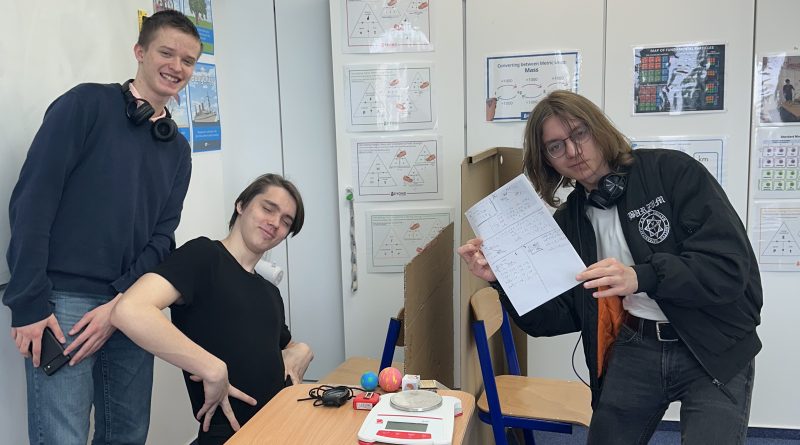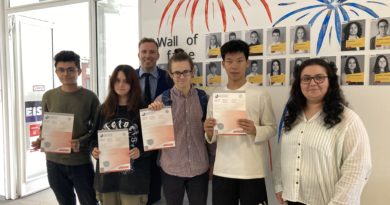Exploring the Conservation of Energy Through Experimentation
There’s nothing quite like seeing physics come alive in the classroom, and that’s exactly what happened during a recent MYP 5 science lesson at EISB. Our students took on the challenge of demonstrating one of the most fundamental principles of physics—the conservation of energy—through a hands-on experiment designed to blend curiosity, observation, and deep learning.
The conservation of energy is not just a law in a textbook; it’s a universal concept that underpins everything from the simplest motions in our daily lives to the most complex systems in science and technology. And what better way to understand it than by actively observing how energy transforms and remains constant in different setups? Our students designed and conducted an engaging lab where they used a wooden inclined plane set at three different angles and tested four different objects to analyze the behavior of friction, gravitational potential energy, and kinetic energy.

The experiment offered more than just data—it offered insight. As the objects slid down the ramps, the students observed how potential energy converted into kinetic energy, and how friction influenced that conversion. With each trial, they not only collected values but built a clearer picture of how energy is never lost, only transformed. This was a perfect moment to realize how the abstract equations they’ve studied in class are reflected in the real world, where every slope and surface tells a story about energy.

By rotating through the various combinations of angles and materials, the students could identify patterns and truly grasp the beauty of conservation in action. These kinds of experiments are more than just academic tasks; they are powerful tools that help students connect theoretical physics to practical experience. They also reinforce critical thinking, data analysis, and problem-solving skills—essential competencies in the MYP framework and beyond.
What made this experience even more meaningful was the level of enthusiasm and collaboration in the room. Everyone was engaged—discussing predictions, comparing results, and reflecting on the outcomes. It’s in these moments that learning truly sticks. As a teacher, witnessing students become so invested in the process is both inspiring and rewarding.
We are incredibly proud of the MYP 5 students for their dedication, creativity, and scientific thinking throughout this lab. They didn’t just learn about conservation of energy—they saw it, measured it, and experienced it firsthand. This experiment is a reminder of how powerful hands-on learning can be, and it’s another step toward helping our students grow into confident, curious, and capable young scientists.




